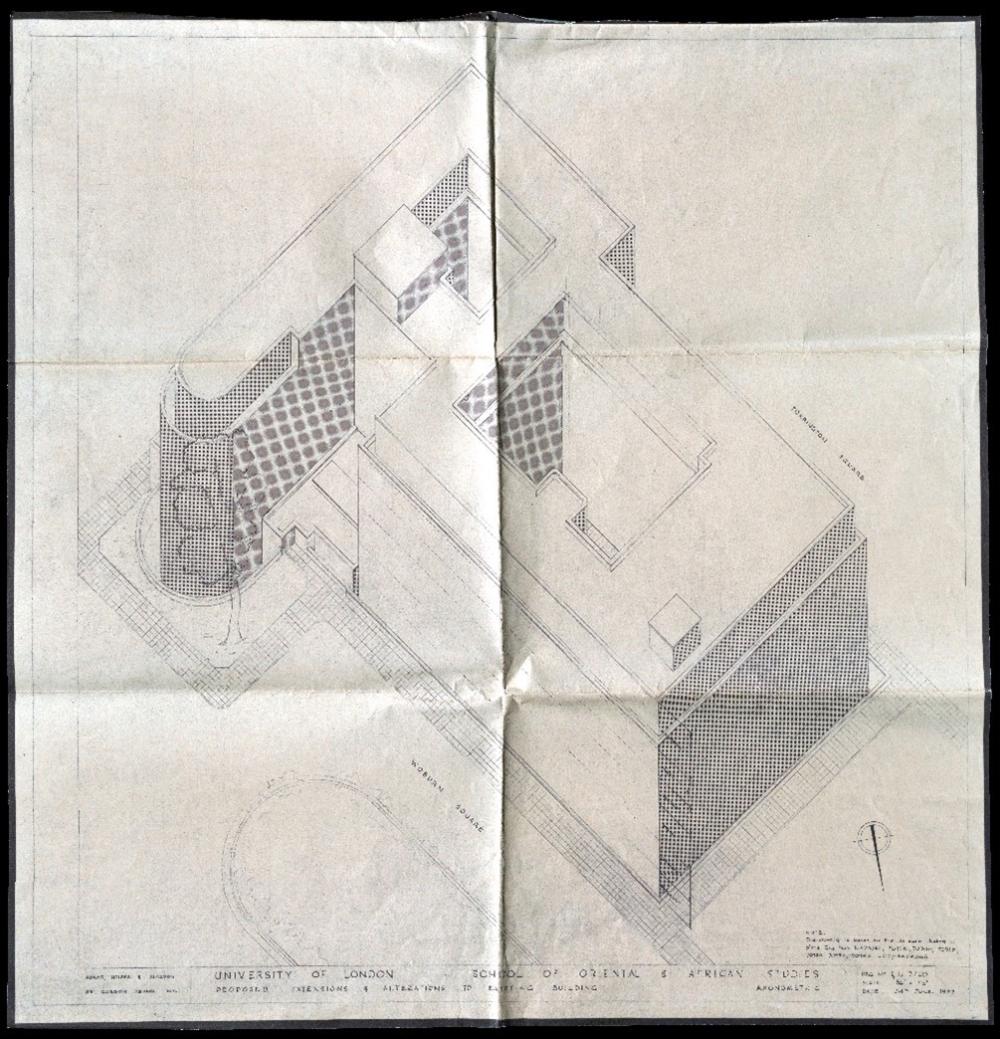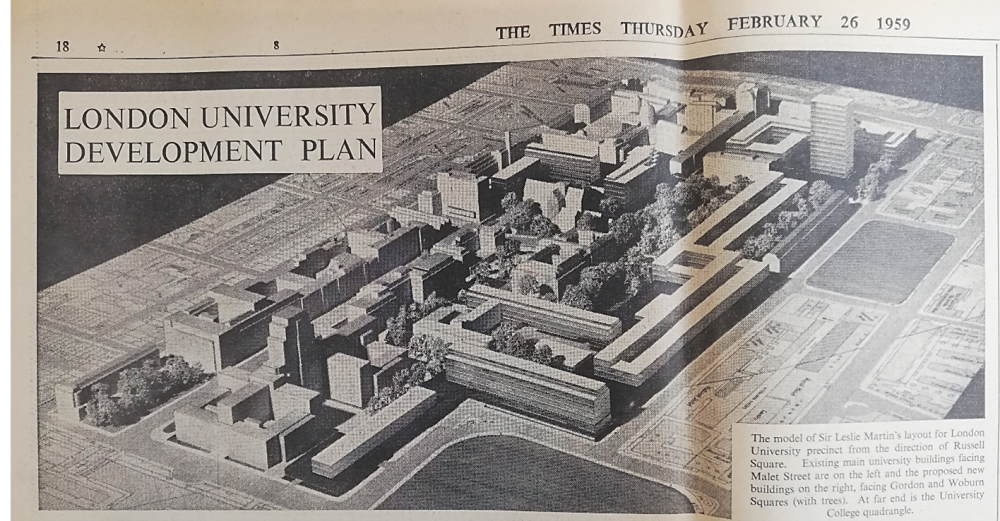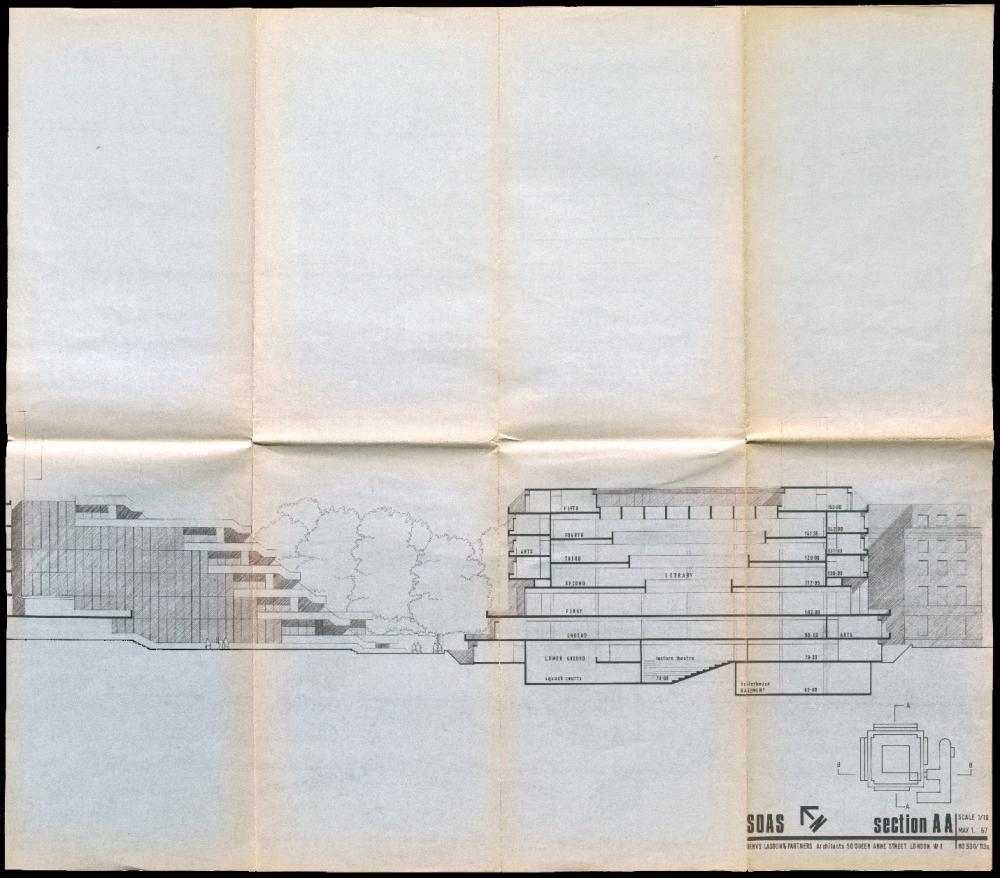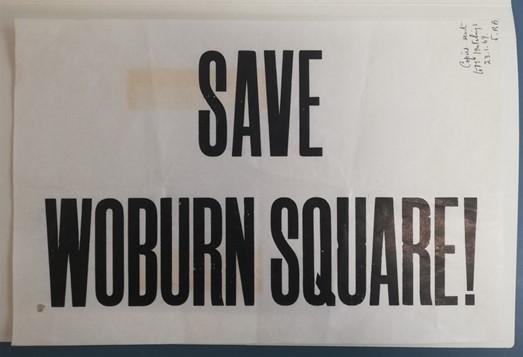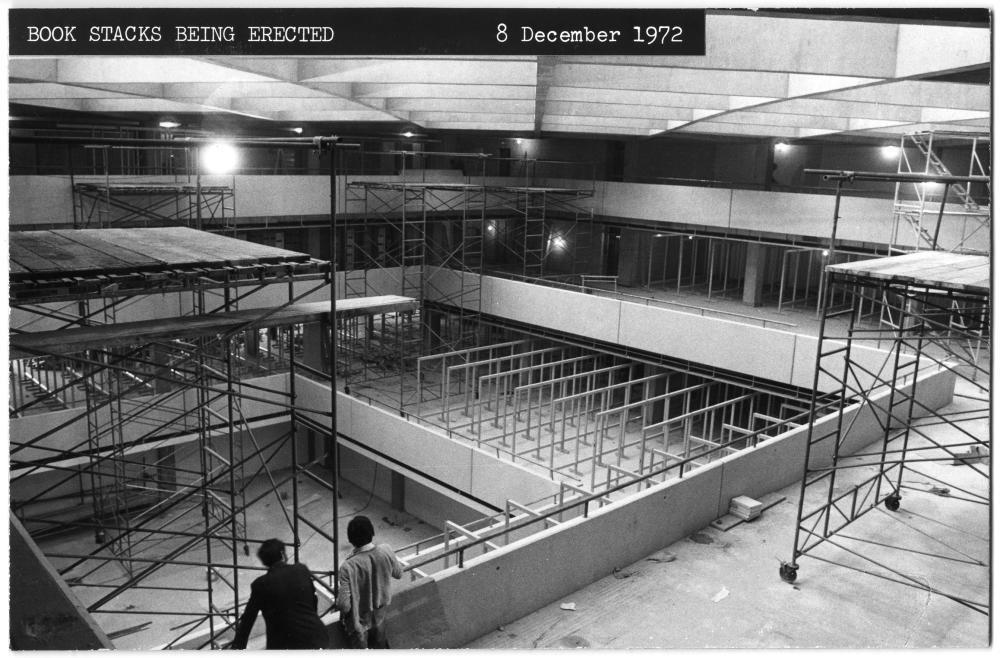Complex Concrete: The twists and turns of the Philips Building
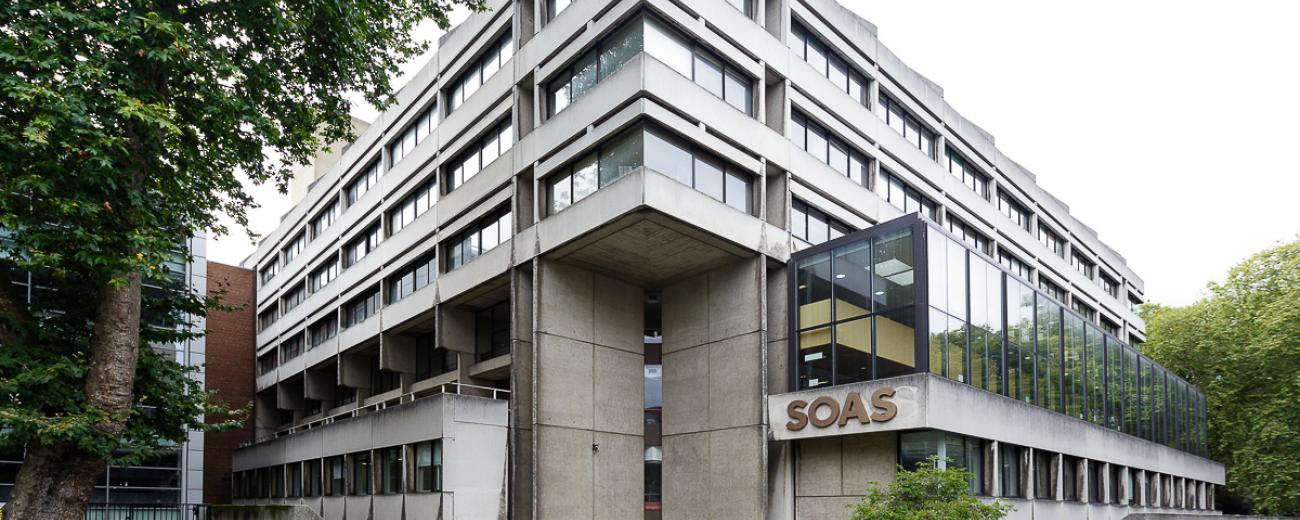

This year marks the 50th anniversary of the opening of the iconic Philips Building, designed by Denys Lasdun & Partners.
For the past 6 months, I’ve been lucky enough to catalogue the records relating to the design and build of the Philips Building in the SOAS Corporate Archives. When I started this project, having previously catalogued material relating to the British Library in the Colin St John Wilson & Partners Archive at the Royal Institute of British Architects, I brought one key expectation with me: the design and build would be more complex than I could anticipate.
Reflecting on this here at the end of the project, it turns out that I was right, but I was very wrong about where I expected those complexities to be, and who or what I expected to be the cause/s. In this blog post, I’m going to share my top twists and turns of the design and build of the Philips Building.
Twist One: Lasdun’s design was the second (arguably the third) design
That’s right, there was already a library building in the works by the time Lasdun was appointed. The necessity for a new building, including a dedicated library space for the first time, was flagged as far back as the late 1940s. This original design (pictured below) by Adams, Holden & Pearson’s (AHP) associate architect Charles Tarling shares notable similarities to Lasdun’s final design, but there were a few key differences – notably, an inner courtyard and an external entrance.
To fund the AHP building SOAS initiated a public funding appeal in early 1961 to raise enough money to match the conditions of a generous grant from the Rockefeller Foundation.
Meanwhile, in 1959, the University of London published their own ambitious plans for redeveloping the whole University precinct (see below). Designed by Sir Leslie Martin (perhaps the godfather of British modernism), and Trevor Dannatt (another significant British modern architect), these plans included a new building for SOAS.
Rather than the robust square building designed by AHP, these proposals were for a narrow, linear building running horizontally off the original SOAS building.
Needless to say, SOAS weren’t thrilled and raised objections. However, due to “almost universal acceptance” by the rest of the University, they weren’t left with much choice. Leslie Martin conceded that the finer details that were cause for concern could be ironed out by an architect. Martin would remain consultant to the project, but recommended Denys Lasdun to carry out the actual design for buildings.
So, this meant that SOAS had to tell Tarling he was off the project (Tarling graciously accepted and continued to work on improvements to the original building), and Denys Lasdun was appointed in late 1960.
Lasdun would eventually create new buildings for SOAS, the Institute of Education and the Law Institute; a much smaller scheme than Martin’s initial proposals.
Twist Two: The Protests
So far so good – the architect is appointed, SOAS is providing a new and expanded brief, and Lasdun’s plans are looking great. But to build an extension on the site promised by the University of London, some of the buildings on Woburn Square needed to be demolished and a through-road removed. Cue public outrage.
There are many press clippings in the archive lamenting the loss of Georgian Bloomsbury. Lasdun even felt compelled to publish a rebuff to architectural historian Iain Nairn to point out that, yes, Woburn Square was Georgian, but the buildings were in poor condition, particularly after bomb damage from World War Two.
Nevertheless, negativity brewed into protest: a Woburn Square Protest Committee formed; posters were pasted; tempers rallied. At the same time, University of London graduates called an extraordinary Convocation, which assembled staff and students together to vote on the planned demolition. A meeting of the Convocation heard from architectural historian John Summerson, who made the case for keeping the facades of the buildings.
Leslie Martin, Denys Lasdun and SOAS representatives made their case against these points. When the vote was finally held, Director Cyril Philips is said to have saved the day with a rousing speech, and the plans were given the green light – just (the vote was 301 for, 281 against).
Twist Three: The strikes
FIfty years on from the Philips Building opening, it seems like industrial action is part of everyday life, particularly over here in the higher education sector. So it was both surprising and familiar to see how much building works were affected by strikes in this case.
Building works began in 1970 with an anticipated handover date of October 1972. However, the eventual handover date would be May 1973, in part due to construction issues, but overwhelmingly due to the impact of industrial action.
In early January 1972, the miners’ strike for better pay began. It was the first major miners’ strike in decades and lasted until the end of February. Power shortages caused by the strike led the government to impose ‘emergency regulations’ to ration power, and as a result building works could only proceed on certain days, at certain times (on days without regulations, the project was worked on for 24 hours straight to try and minimise delays).
After trying to catch up on delays from the miners’ strike, further trouble came in June in the form of the first and only national builders’ strike. If you’d like to learn more about this, see Eileen Turnbull’s fantastic article in The Tribune. The strike lasted 13 weeks and all that could be done for the majority of that time was inspections, which must have been frustrating.
Bonus Twist: Why isn’t the building more well-known?
After learning about the lengthy and in many ways contemporary story of this building (it’s got everything – iconic architects, protests and strikes, demolition, concrete and issues of sustainability and regeneration), I’ve reached the end of the project with this question constantly rattling around.
Every morning on the way to work, I look at the exterior and there’s something so exciting, so well-balanced and texturally interesting about this building that is comfortably nestled into its environment. In classic Lasdun style, the building is monumental, but on a very human scale. So why isn’t it more appreciated?
One of the key reasons I can think of, is that it’s a space within a space – it can only be accessed internally through the main SOAS building, and there isn’t an external entrance. It’s also slightly overshadowed by the colossal spinal buildings on Bedford Way, which are more well-known. University campuses can also be public spaces that seem private and off-limits to many, so perhaps it just isn’t seen as much as famous Lasdun sites.
Whatever the reason, I think the building and its history deserve further scrutiny and analysis, and I hope that the publicly accessible catalogue will allow people to do this.
The free exhibition, A Concrete Solution: 50 Years of the Philips Building, is open to the public from 25 September – end of December 2023, on the ground floor of the SOAS Library
